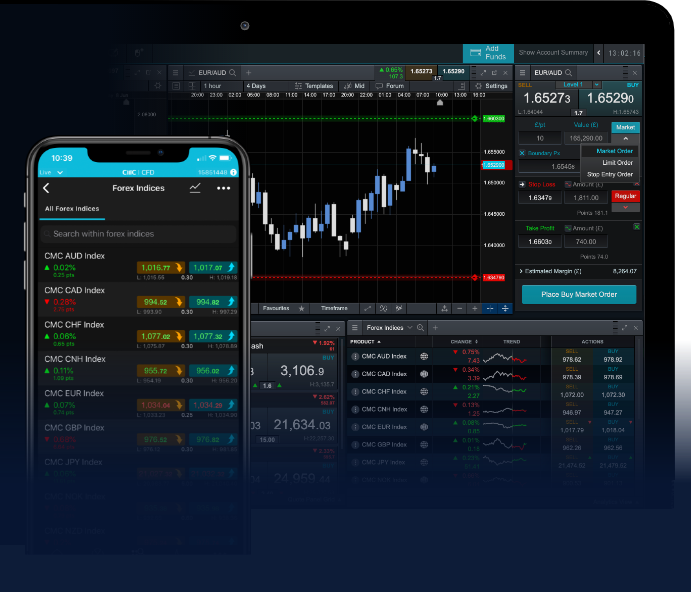Mastering Forex Trading Strategies, Tips, and Insights 1862033485

In the rapidly evolving world of finance, forex trading acev.io stands out as a platform providing valuable resources for both novice and experienced Forex traders. In this article, we will explore the intricacies of Forex trading, examining strategies, risk management, and insights to enhance trading performance.
Understanding Forex Trading
Forex trading, or foreign exchange trading, involves buying and selling currencies in the global marketplace. It is one of the largest financial markets in the world, with a daily trading volume exceeding $6 trillion. Unlike traditional stock markets, Forex operates 24 hours a day, five days a week, providing a unique environment for traders to engage in different currency pairs.
The Basics of Forex Trading
At its core, Forex trading is about speculating on the value of one currency relative to another. Traders are typically looking to profit from fluctuations in currency prices. For example, if a trader believes that the Euro will strengthen against the US Dollar, they will buy Euros with Dollars. If the value of the Euro increases relative to the Dollar, the trader can sell the Euros back for a profit.
Currency Pairs
In Forex trading, currencies are quoted in pairs, such as EUR/USD (Euro/US Dollar) or USD/JPY (US Dollar/Japanese Yen). The first currency in the pair is known as the base currency, while the second is the quote currency. The exchange rate indicates how much of the quote currency is needed to purchase one unit of the base currency.
Technical vs. Fundamental Analysis
Successful Forex trading often hinges on analysis, which can be broadly categorized into two types: technical analysis and fundamental analysis.
Technical Analysis
Technical analysis involves studying historical price movements and trading volumes to identify patterns and predict future price movements. Traders utilize various tools, including charts, indicators, and trend lines, to make informed decisions. Common technical indicators include Moving Averages, Relative Strength Index (RSI), and Bollinger Bands.
Fundamental Analysis
In contrast, fundamental analysis assesses the underlying economic factors that influence currency values. This includes interest rates, inflation, monetary policies, and economic indicators such as GDP and employment data. Traders who employ fundamental analysis strive to understand how global events, such as political instability or economic crises, may affect currency prices.
Developing a Trading Strategy
A well-defined trading strategy is crucial for success in Forex trading. Here are some key components to consider when developing a strategy:

1. Define Your Goals and Risk Tolerance
Before embarking on Forex trading, it’s essential to outline your financial goals and risk tolerance. This will guide your trading decisions and help you stay disciplined during market fluctuations.
2. Choose a Trading Style
Different trading styles exist, including day trading, swing trading, and scalping. Day traders open and close positions within the same day, while swing traders hold positions for several days or weeks. Scalpers make numerous trades over short timeframes to capture small price movements. Your choice of trading style should align with your personality, schedule, and risk appetite.
3. Implement Risk Management Techniques
Risk management is a critical aspect of Forex trading. Traders should never risk more than they can afford to lose on a single trade. Utilizing stop-loss orders can help limit potential losses, while proper position sizing ensures that each trade’s risk is appropriate relative to the trader’s overall capital.
Emotional Discipline in Trading
Forex trading can be emotionally taxing, particularly during periods of high volatility. Maintaining emotional discipline is crucial for successful trading. Many traders fall victim to fear and greed, leading to impulsive decisions. It is essential to stick to your trading plan, regardless of market emotions.
The Role of Technology in Forex Trading
Technology has transformed the Forex trading landscape, making it more accessible than ever before. Online trading platforms and mobile applications enable traders to execute trades, monitor market trends, and access educational resources from virtually anywhere in the world.
Algorithmic Trading
Algorithmic trading involves using computer programs to automate trading processes. These algorithms can analyze market data, identify trading opportunities, and execute trades based on predefined criteria, often at speeds faster than human traders. While algorithmic trading can enhance efficiency, it carries its own risks and requires rigorous testing and monitoring.
Staying Informed: Market News and Events
Staying updated on market news and economic events is vital for Forex traders. Major news events, such as central bank announcements and geopolitical developments, can significantly impact currency prices. Utilizing economic calendars and news platforms can help traders anticipate market volatility and make informed decisions.
Conclusion
Forex trading offers vast opportunities for profit but also comes with inherent risks. By developing a solid understanding of the market, implementing effective trading strategies, and maintaining emotional discipline, traders can enhance their chances of success. Continuous learning and adaptation to changing market conditions are key components for any trader looking to thrive in the Forex market.




